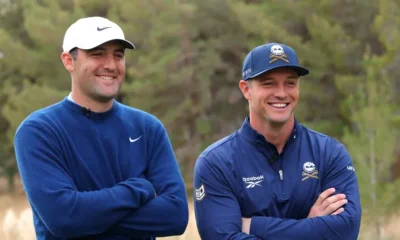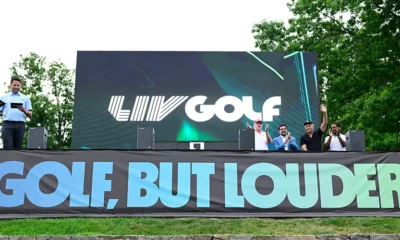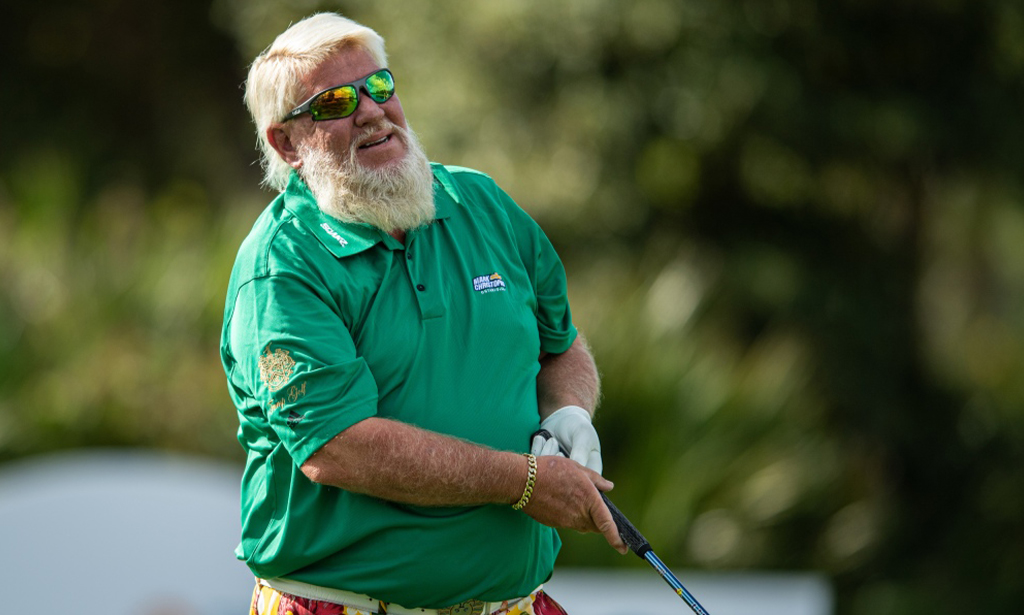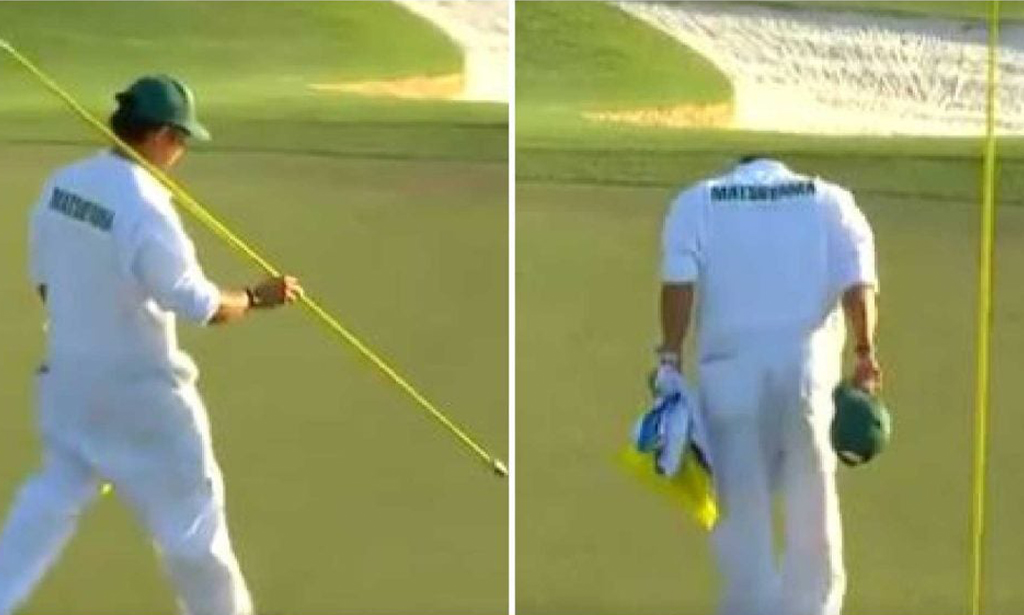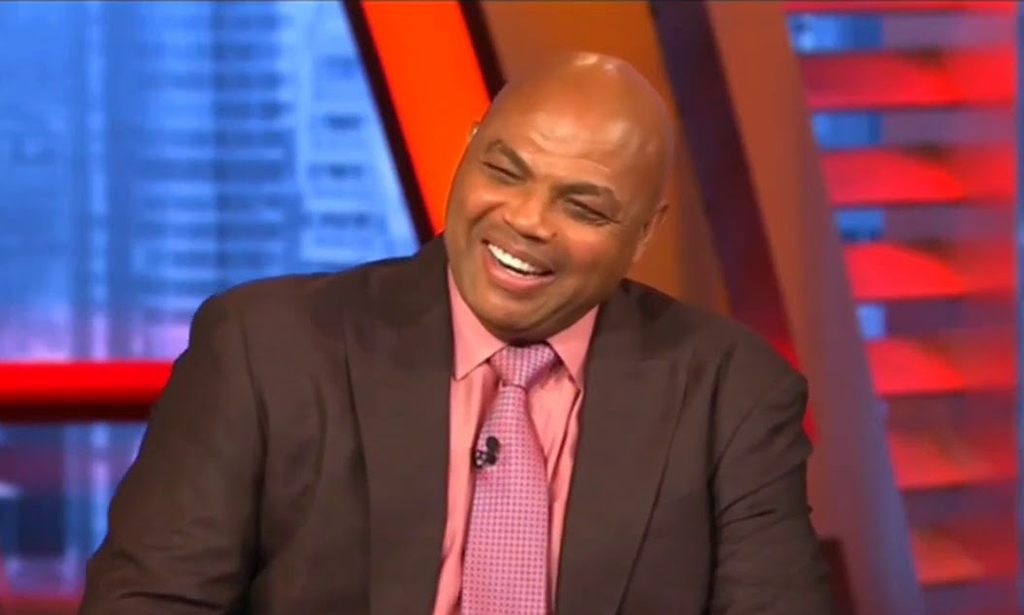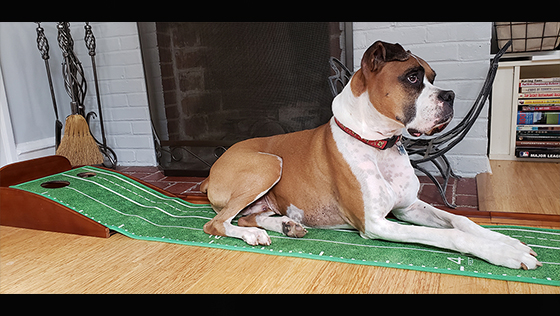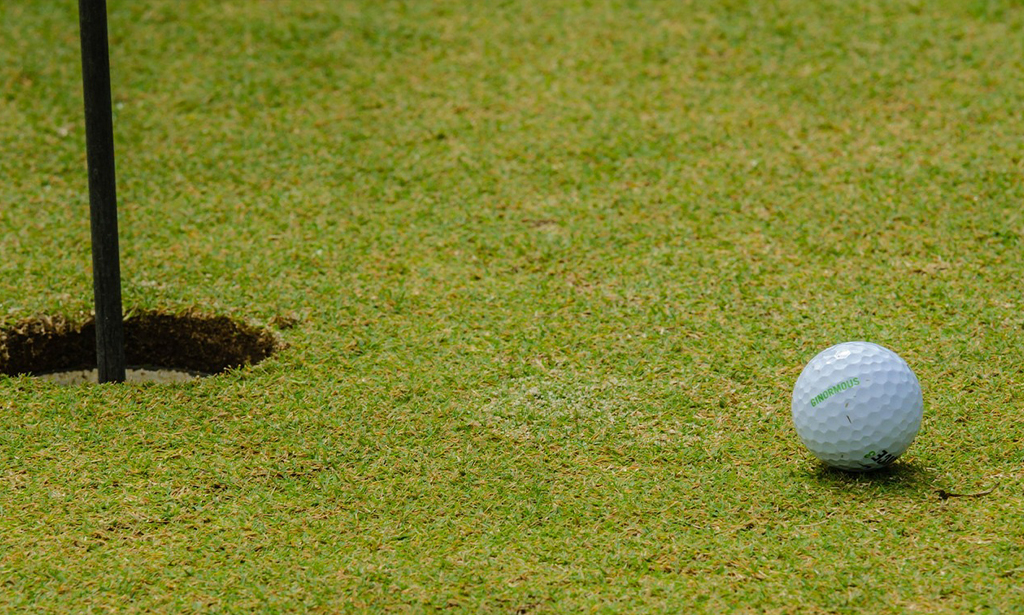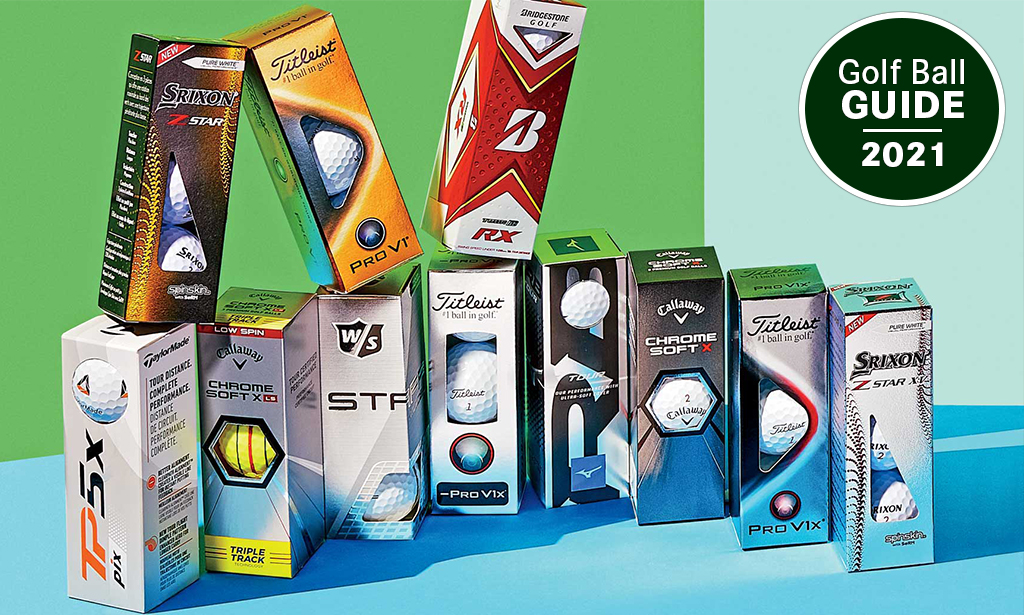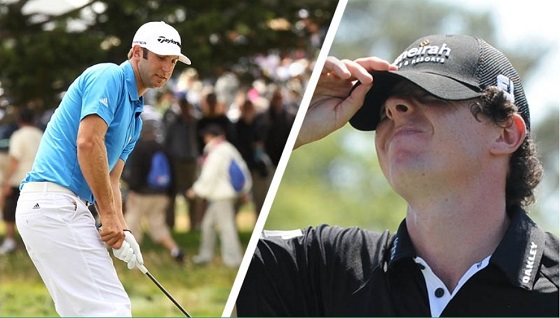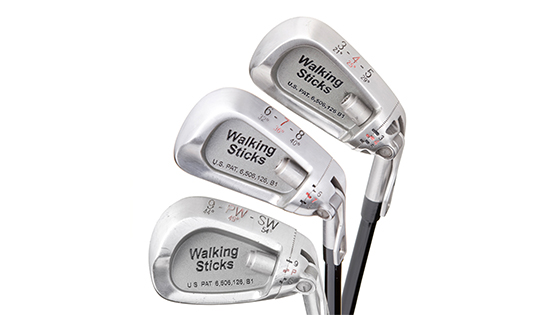Blog
Golf Introduces New “Bryson” Rule to Limit Driver Length
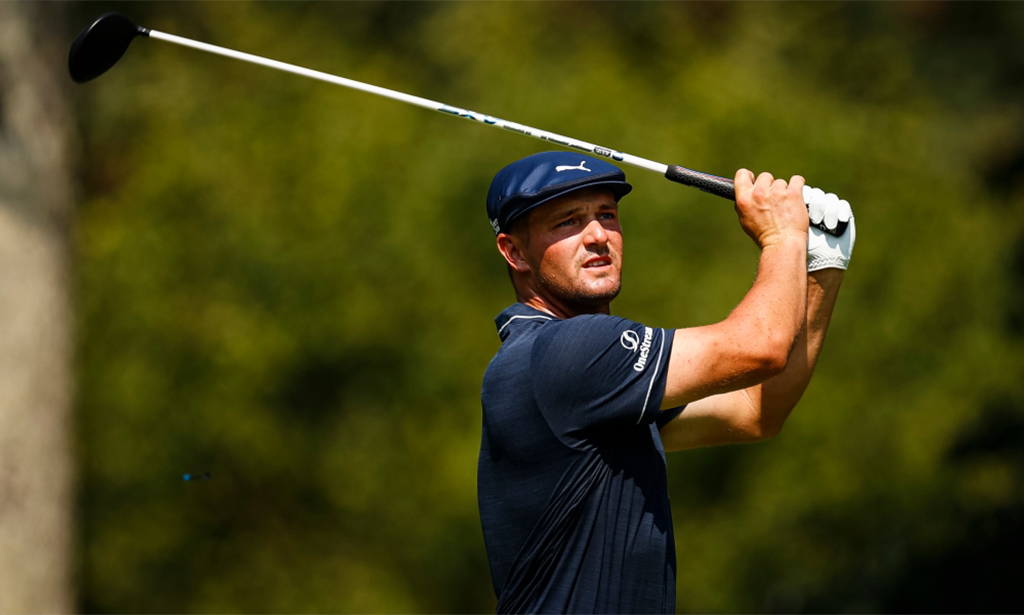
Around this time last year, the world was different. We were amidst a global pandemic, parents were thrust into the job of teachers as schools were, for the most part still solely online learning, and oh yeah…48-inch drivers were one of the hottest topics in the golf equipment world. That was mostly thanks to Bryson DeChambeau’s announcement that he’d be testing longer drivers following his 2020 U.S. Open win.
Mind you, DeChambeau had just lapped the field at Winged Foot, quite literally one of the most difficult U.S. Open venues statistically. Then he does what? He starts talking about his plan to test out even longer drivers to push his distance limits. This clearly got the golf worlds attention. Fast forward 12 months…
You could almost hear the thoughts swirling in the heads of his competitors heads: If Bryson gets even longer, I’m gonna be forced to keep up. Shoot, I can’t keep up now. I must be better! Others were likely more skeptical of longer drivers and wanted nothing to do with it.
All that said, either way, DeChambeau did bring up a viable point. Why not experiment with longer driver builds to see if there’s significantly more distance to be had?
In the wake of DeChambeau’s declaration, some tour players ordered 47- and 48-inch drivers from their PGA Tour equipment reps to try out. “If he is gonna do it, why cant I? Afterall, he is the mad scientist of golf” As onlookers, and experimenters ourselves, we speculated: Will 48-inch drivers REALLY become the new norm? Will so many players switch into longer drivers that 8,000 yard golf courses will become the new norm?
I suppose, if you really wanted to, you could argue that distance was already an issue on the PGA Tour. Hell, even without longer drivers being thrown into the equation. The USGA has certainly been researching the distance debate for itself.
In the last year, though, 48-inch drivers haven’t quite taken over professional golf like some thought they might. Sure, Viktor Hovland has experimented with the concept. And yeah, Phil Mickelson won the 2021 PGA Championship with a driver measuring 47.9 inches (Bet you didn’t know that gem).
But as the PGA Tour discovered in its recent research on the matter of driver length, it really only impacts a very small segment of tour golfers. The numbers you ask, well I am glad you did. A mere 3 percent of professional players use clubs longer than 46 inches. That’s not exactly the takeover that us equipment insiders were anticipating. Surely golf wouldn’t make a rule that affects 3 out of 100 golfers and makes the game less fun? Right?
Regardless, on Tuesday, the USGA and R&A announced a new local rule option to limit driver length to 46 inches. That’s right, its an option. So, week in and week out the rules governing this will change based on who is hosting the event. 1 week it’s OK, but the next may be… “nah, sorry man – it’s a hard no for us”. It’s kind of like reservation gambling at the native American casinos. Its illegal over here, 1 mile away, BUT over here, 1 mile east, you are playing blackjack and penny slots to your hearts content and it’s all good. Something seems off to me on this one…
“Admittedly, this is not the ‘answer’ to the overall distance debate/issue, but rather a simple option for competitive events,” Mike Whan, the USGA’s chief executive officer, said in a statement. “It’s important to note that is not a ‘Rule of Golf,’ and as such, it is not mandated for the average, recreational golfer. Rather, this is an available tool for those running competitive events.”
In a statement, the PGA Tour then announced that it would implement the local rule for its competitions starting on Jan.1, 2022.
“After understanding the feedback received from the golf manufacturing community, we also undertook a survey of usage of clubs in use across the PGA Tour, PGA Tour Champions and the Korn Ferry Tour and found that a very small number of players either have used or are currently using clubs greater than 46 inches,” the statement read. “The PGA Tour Player Advisory Council recently reviewed the subject and we have concluded that the PGA Tour will implement the Local Rule on Jan. 1, 2022.”
We already know Mickelson’s stance on the subject, as you can watch in the embedded Tweets below. Spoiler alert, He don’t like it!
That got us thinking…What do other PGA Tour players think about the ban of drivers longer than 46 inches? Here’s what a collection of PGA Tour pros had to say at the 2021 CJ Cup following the news.
Justin Thomas
“Yeah, I don’t really agree with it,” Thomas told the press on Tuesday at the 2021 CJ Cup. “I think it’s — I don’t know. I feel like there’s a lot of other things, you know, like the arm-bar putter, that they should be approaching as opposed to the length of driver. I think the fact that you see only a few people using a long driver speaks for itself, that it’s not really that big of an advantage. It’s a lot harder to hit it straight.
“In terms of do I think it makes the game of golf and growing the game better? No, I don’t at all, but they seem to have their kind of mind around that for a while now, so it seems to be the issue because if there’s an amateur golfer or players at home that want to hit it a little bit farther, so be it. Or if there’s guys out here that want to have a chance to put it in play with a 47-, 48-inch driver, then power to them. I had that opportunity; I just chose not to. I don’t necessarily agree with it, but it is what it is.”
Kevin Kisner
“I don’t know what they’re trying to accomplish other than to keep people from hitting it far,” Kisner told GOLF.com. “I mean, the game’s moving in that direction. I think they’re just trying to figure out a way to keep it in some sort of a realm. But anything that makes the game harder I’m against. So, if it makes it harder, I don’t wanna do it. The game’s hard enough, man.
Dustin Johnson
“My opinion is more, I don’t think it matters what length someone uses, because the longer the driver gets the harder it is to hit straight,” Johnson told GOLF.com. “So, if you could hit a 48-inch driver and keep it on the planet, then more power to you. I’ve tested with ‘em, and yeah it goes further, but it also goes a lot more crooked. You lose a lot of control, so for me, I don’t think it’s necessary.”
Adam Scott
“My initial reaction is that I don’t think it’ll make any difference,” Scott told GOLF.com. “The only thing I can say is maybe for the future if everyone started using 47- and 48-inch drivers and they all started to go down that route, but for now I don’t see it making any real difference. I don’t know how many guys were using 47-inch drivers.”
Collin Morikawa
“Look, it’s not going to change my driver specs, I’ll tell you that, and I don’t think it’s going to change many other guys’ driver specs,” Morikawa told the press on Tuesday. “Is that the answer to hitting it shorter? No. You know, I think yeah, if you have a long driver and you see what Bryson did, you see what long drive guys do, they have a longer driver, right, and they’re able to hit it farther, but can you maintain that on the golf course? Hasn’t been done yet. Not saying it won’t be done, but you know like if a guy wants a 47-inch driver, I think they should let them, because why not?
“We’ve seen courses that you end up shooting 10-to-15 under, and it’s not because the course is 9,000 yards long. We don’t play that. It’s because it makes you shape shots; it makes you hit different shots and it’s all about course design. So that’s my opinion in it or on it, is that I think course design needs to be structured in a way where we don’t need 8,000-yard courses. Yeah, they’re great sometimes, but there’s a lot of short courses on our tour that don’t provide 25 under par and it’s because of the way the layout is and the conditions. So, I don’t think many guys have over 46 inches, their driver, anyways, so I don’t think it will change much.”
Hudson Swafford
“I mean I can’t hit a 48-inch driver, so, it doesn’t really bother me,” Swafford told GOLF.com. “I hit a 45-inch driver; pretty standard, actually a little shorter. So, it doesn’t really bother me. It is what it is. I don’t really care. But it’s interesting; people are trying it and picking up a lot of speed. I picked up like a 46-inch and picked up speed, but I can’t hit it straight. So, it didn’t do me any good.”
Stewart Cink
“I think it’s going to have zero impact on golf, because I don’t know if I’ve ever known a golfer to use a driver longer than that in competition out here,” Cink told GOLF.com. “I don’t think it’s going to be a huge impact. To me it seems like there’s other areas, if they want to address distance, the length of the shaft is probably not the main thing, it’s probably just to safest one from a legal standpoint.”
This article originally appeared on Golf.com
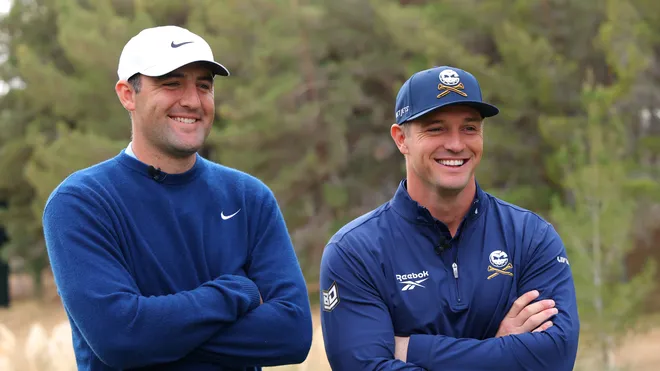
In the ever-evolving world of professional golf, few rivalries capture the contrast of style and substance like Scottie Scheffler versus Bryson DeChambeau. While both have claimed massive wins and global headlines, their paths to success and how they play the game couldn’t be more different. Here’s a deep dive into their strengths, weaknesses, career highlights, and what makes each stand out in today’s competitive landscape.
Backgrounds and Styles
Scottie Scheffler
The Dallas-born Scheffler embodies a classic, workmanlike approach to golf. Known for his calm demeanor, efficient swing, and remarkable consistency, Scheffler has risen to the top of the world rankings with little flash but elite-level substance. His game is built on balance, precision, and one of the most reliable tee-to-green performances the sport has seen in years.
Bryson DeChambeau
Nicknamed “The Scientist,” DeChambeau has taken an analytical and experimental approach to the game. He’s redefined physical fitness in golf, adding serious bulk to increase driving distance. Known for using single-length irons and obsessing over launch angles and biomechanics, Bryson is a true disruptor. His aggressive style polarizes fans and analysts, but it undeniably commands attention.
Strengths
Scheffler
- Tee-to-Green Excellence: Leads the PGA Tour in strokes gained tee-to-green.
- Consistency: Rarely misses cuts and often finishes in the top 10.
- Short Game: Exceptional touch and creativity around the greens.
- Mental Game: Composed under pressure; rarely rattled.
DeChambeau
- Driving Distance: One of the longest hitters in the game; regularly over 320 yards.
- Innovation: Willing to take unconventional approaches for marginal gains.
- Power Play: Dominates par 5s and shortens long courses with his length.
- Confidence: Self-belief and boldness to attempt shots most won’t.
Weaknesses
Scheffler
- Putting: Historically his weakest stat, though he’s shown improvement.
- Media Presence: More reserved; lacks the big personality that moves the needle for fans and brands.
DeChambeau
- Inconsistency: Can be volatile—either dominating or struggling.
- Course Management: Aggressiveness sometimes leads to trouble.
- Injury Risk: His physical transformation has come with some health setbacks.
Biggest Wins
Scottie Scheffler
- The Masters (2022)
- The Players Championship (2023)
- Multiple WGC and Signature Events
As of 2025, Scheffler has claimed over 10 PGA Tour titles and continues to rack up top finishes in majors and elite events.
Bryson DeChambeau
- U.S. Open (2020)
- Arnold Palmer Invitational (2021)
- Multiple LIV Golf Wins
DeChambeau made headlines by joining LIV Golf, where he’s claimed multiple high-stakes victories, including a team championship and a dominant individual LIV win in 2023.
Career Earnings
Scheffler:
Over $50 million in PGA Tour earnings alone, with additional income from endorsements like Nike, TaylorMade, and Rolex.
DeChambeau:
Estimated $60–$80 million, largely boosted by a reported $100+ million LIV Golf contract and additional prize money. His endorsements have shifted due to his controversial LIV move, but he remains a marketable figure.
Similarities
Both are U.S.-born and played collegiate golf (Scheffler at Texas, DeChambeau at SMU).
Each has reached the top 10 in the Official World Golf Ranking.
Both have won majors and represented the U.S. in Ryder Cups.
Each has shown a willingness to be different—Scheffler through quiet dominance, DeChambeau through outspoken innovation.
Key Differences
| Trait | Scottie Scheffler | Bryson DeChambeau |
|---|---|---|
| Playing Style | Traditional, consistent | Aggressive, experimental |
| Physical Transformation | Minimal | Extreme (bulk and strength) |
| Equipment | Standard setup | Single-length irons |
| Public Persona | Reserved, grounded | Outspoken, controversial |
| Tour Affiliation | PGA Tour loyalist | LIV Golf convert |
Final Thoughts
Scheffler and DeChambeau represent two archetypes in modern golf: one a quiet technician, the other a showman scientist. Whether you admire Scottie’s stoic efficiency or Bryson’s radical reinvention, both are changing the game in their own way. And in a sport where individuality meets performance, there’s room—and demand—for both.
Blog
Why Proper Club Fitting Is the Real Game Changer
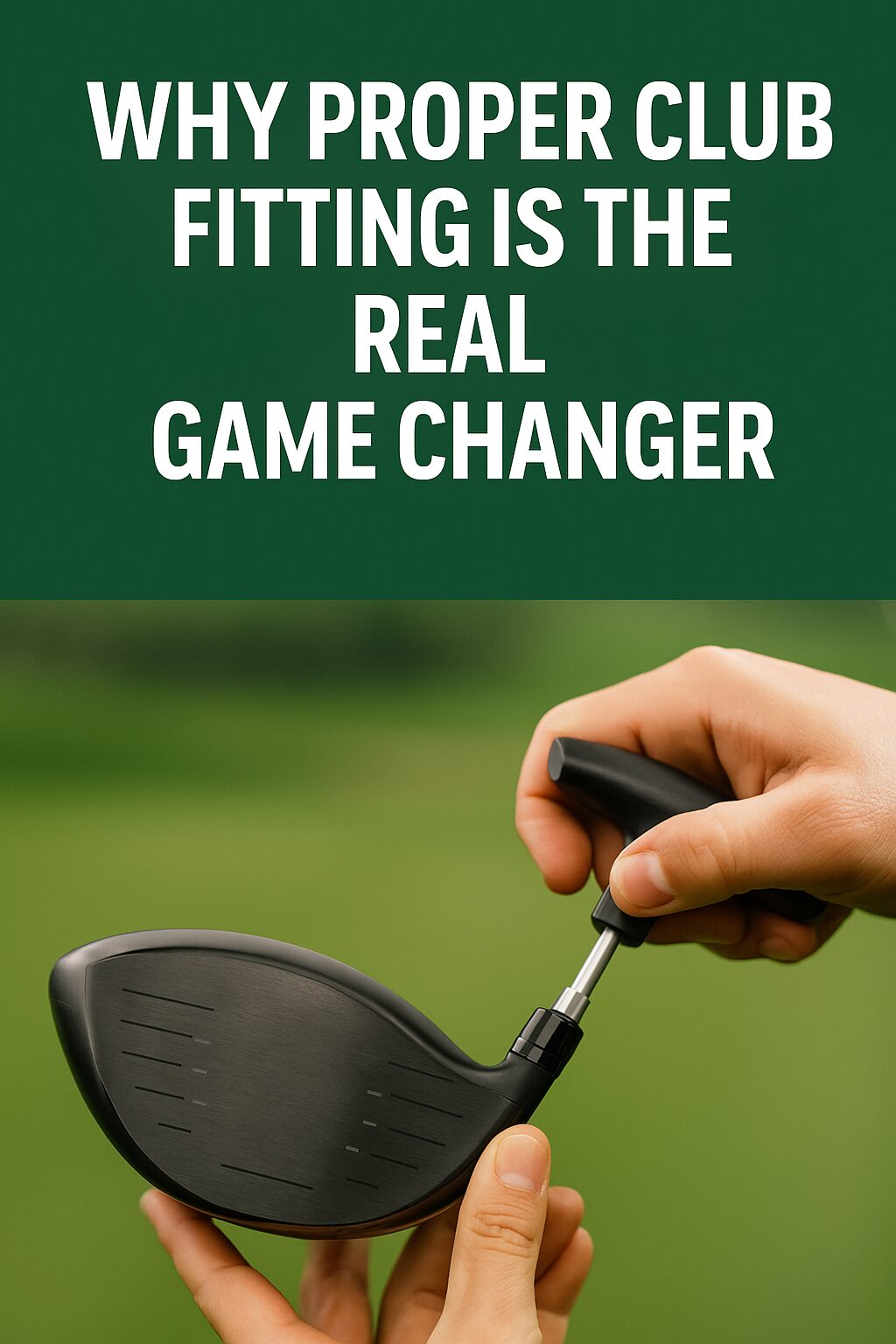
If you’ve ever walked off the 18th green thinking, “It’s not me, it’s the clubs,” well… you might be half right.
As a PGA Professional who’s watched thousands of swings—from scratch players to first-timers—I can tell you that one of the most overlooked keys to better golf is proper club fitting. Not just buying shiny new sticks off the rack, but taking the time to find clubs that are tailored to your swing.
You don’t need a Tour card to get Tour-level precision. Let’s talk about why club fitting matters, what it changes, and how it can truly transform your game from the tee box to the final putt.
The Myth of “Good Enough”
“I’m not good enough to be fit for clubs.”
That’s the most common thing I hear—and it’s completely backwards.
High-handicap golfers have even more to gain from club fitting than low-handicappers. Why? Because the equipment can help you fix ball flight, optimize distance, reduce mis-hits, and build confidence—all without having to reinvent your swing.
Off-the-rack clubs are designed to fit “average” specs. But no two golfers are the same. Length, lie angle, shaft flex, grip size—these all play a massive role in how the club interacts with your body and the ground.
What Happens in a Proper Club Fitting?
At its core, a fitting session is about matching the equipment to your natural swing—not forcing you to swing a certain way to fit the gear.
Here’s what a proper club fitting includes:
1. Interview & Swing Assessment
A certified fitter (or PGA pro like myself) will ask about your current set, ball flight tendencies, common misses, and goals. Then we’ll watch you hit some shots to get a baseline.
2. Launch Monitor Data
Using tools like TrackMan or Foresight, we’ll capture numbers like:
- Ball speed
- Launch angle
- Spin rate
- Club path and face angle
- Carry distance and dispersion
These numbers don’t lie—and they tell us what to tweak.
3. Testing Head & Shaft Combinations
You’ll hit several combinations of club heads and shafts to find what gives you the best performance. One degree of loft or a different shaft flex can make a huge difference.
4. Dialing In Lie Angle & Length
Lie angle affects directional control—too upright, and you might pull shots left; too flat, and you’ll miss right. Club length affects control, consistency, and strike location.
5. Grip Size & Feel
Don’t underestimate this. A grip that’s too thick or too thin can alter your grip pressure and release pattern.
Real Results—Backed by Data
One of my students recently went through a full iron fitting. He was using clubs he bought off the rack 10 years ago. His miss was a push-fade, and he struggled with distance control.
After 90 minutes, a combination of slightly shorter shafts, softer flex, and two degrees more upright lie changed everything. His dispersion tightened by 40%, and he gained an average of 12 yards per club. More importantly—his confidence skyrocketed.
And it wasn’t just him. Across the board, golfers who get fitted:
- Gain more consistent contact
- Reduce directional misses
- Improve distance gapping
- Hit more greens in regulation
- Score better, without changing their swing
The Mental Game Boost
Here’s a secret: it’s not just about numbers. Fitted clubs give you confidence. When you know the tool in your hand is built for you, you swing freer, commit more fully, and stop second-guessing every shot.
Confidence leads to better swings. Better swings lead to better results. It’s a cycle—and it starts with the right equipment.
What About Cost?
Yes, a proper fitting might cost $75–$150 depending on where you go. And yes, custom-fit clubs may be slightly more than what you’d pay at a big box store.
But if you’re already spending time and money on golf, wouldn’t you want to get the most out of it?
A one-time investment in fitting can save you years of frustration—and possibly hundreds spent chasing fixes that won’t work with ill-fitting clubs.
Look—I’ve given thousands of lessons in my career, and nothing changes a golfer’s outlook faster than finally swinging clubs that work with them, not against them.
Whether you’re a 5 handicap trying to fine-tune yardages or a 25 handicap tired of slicing your driver, a proper club fitting can absolutely be a game changer.
You don’t need a new swing—you just need the right tools.
So before you spend another dollar on swing gadgets or tip videos, find your local PGA professional or certified fitter and book a session. Your game (and your sanity) will thank you.
Want more ways to play better without starting over?
Visit ClickItGolf.com every week for practical golf improvement tips, equipment reviews, betting insights, and advice from golfers who live the game every day.
Blog
Zurich Classic 2025: Betting & Fantasy Insights from Kelly Hodgeson
Rory McIlroy returns to the Zurich Classic with Shane Lowry as favorites, but in this unique team event, betting and fantasy success comes down to smart picks and hidden value—here’s how to play it.

The Zurich Classic of New Orleans returns this week, offering a unique team format that challenges both bettors and fantasy players alike. As someone who enjoys the thrill of wagering and the strategy of fantasy golf, I’ve taken a close look at this year’s field to provide insights that could help you make informed decisions.
Understanding the Format
The Zurich Classic is the PGA Tour’s only team event, featuring 80 two-man teams competing over four rounds:
- Rounds 1 & 3: Best Ball (Four-Ball)
- Rounds 2 & 4: Alternate Shot (Foursomes)
This format emphasizes team chemistry and strategy, making it distinct from traditional stroke play events.
Defending champions Rory McIlroy and Shane Lowry enter the tournament as favorites, with odds around +350 to +360 across various sportsbooks. Their victory last year and McIlroy’s recent Masters win contribute to their favored status.
Betting Consideration: While their form is impressive, the low odds may not offer substantial value. In team events with unpredictable dynamics, it’s often prudent to seek teams with higher potential returns.
Teams to Watch
Several pairings present intriguing opportunities:
- Billy Horschel & Tom Hoge (+2200): Horschel’s history at TPC Louisiana, including a previous win, combined with Hoge’s recent top-20 finishes, make them a formidable duo.
- Thomas Detry & Robert MacIntyre (+1800): This European pair has shown consistency, with Detry’s earlier victory this season and MacIntyre’s solid performances leading up to the Masters.
- Patrick Fishburn & Zac Blair (+8000): As longshots, their fourth-place finish last year and recent form suggest they could surprise the field again.
Fantasy Golf Insights
For those setting fantasy lineups, consider the following:
- Nick Taylor & Adam Hadwin: Their past success at TPC Louisiana, including a second-place finish in 2023, indicates strong course compatibility.
- Davis Riley & Nick Hardy: Winners in 2023, their chemistry and experience in this format could translate into valuable fantasy points.
- Alex & Matt Fitzpatrick: The Fitzpatrick brothers have shown steady improvement, with a T11 finish last year, making them a reliable mid-tier option.
Strategic Betting Tips
- Value Over Favorites: In a format prone to variability, consider teams with odds of +1800 or higher that exhibit strong recent form and synergy.
- Monitor Course History: Teams with a track record at TPC Louisiana may have an edge, especially in navigating the unique team dynamics.
- Stay Informed: Keep an eye on weather conditions and any last-minute team changes, as these can significantly impact performance.
As the tournament unfolds, the combination of strategic betting and informed fantasy selections can enhance your engagement with the Zurich Classic. Remember to play responsibly and enjoy the unique challenges this team event presents.
-

 Product Review6 years ago
Product Review6 years agoThe Perfect Practice Putting Mat Review by Jason Tenzer
-

 Blog4 years ago
Blog4 years agoLoophole Rule Offers PGA Tour Pros a Mulligan
-

 Blog4 years ago
Blog4 years ago2021 Buyer’s Guide: The Top 10 Value Golf Balls For Distance & Feel
-

 Blog4 years ago
Blog4 years agoGolf Marriage Counselor
-

 Blog6 years ago
Blog6 years ago9 Biggest Chokes Of The Past Decade
-

 Product Review6 years ago
Product Review6 years agoTHE ADJUSTABLE IRONS: WALKING STICKS GOLF CLUBS
-

 Blog4 years ago
Blog4 years agoWhat Your Golf Clubs Say About You
-

 Equipment6 years ago
Equipment6 years agoOHK Sports Interview by Jason Tenzer


